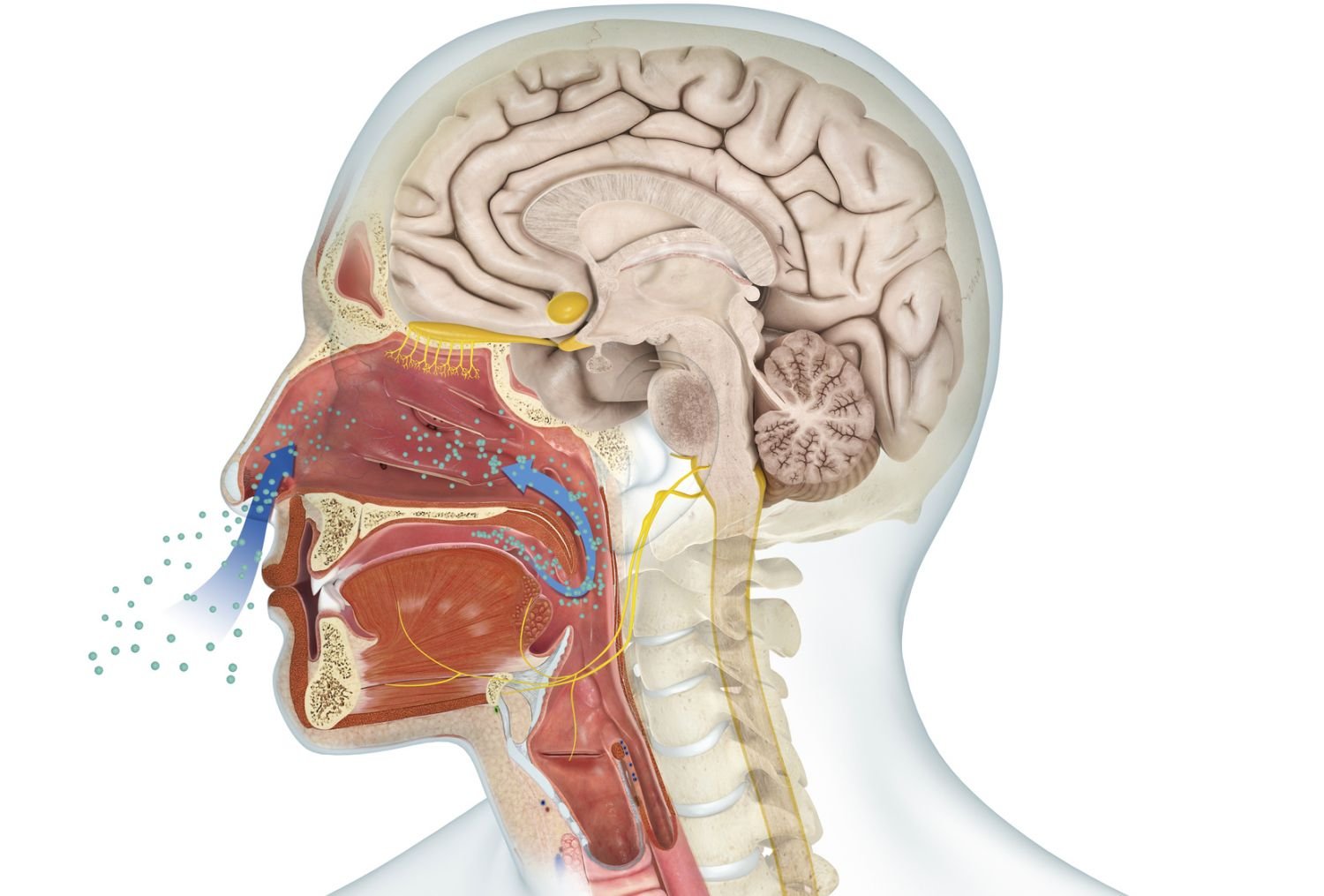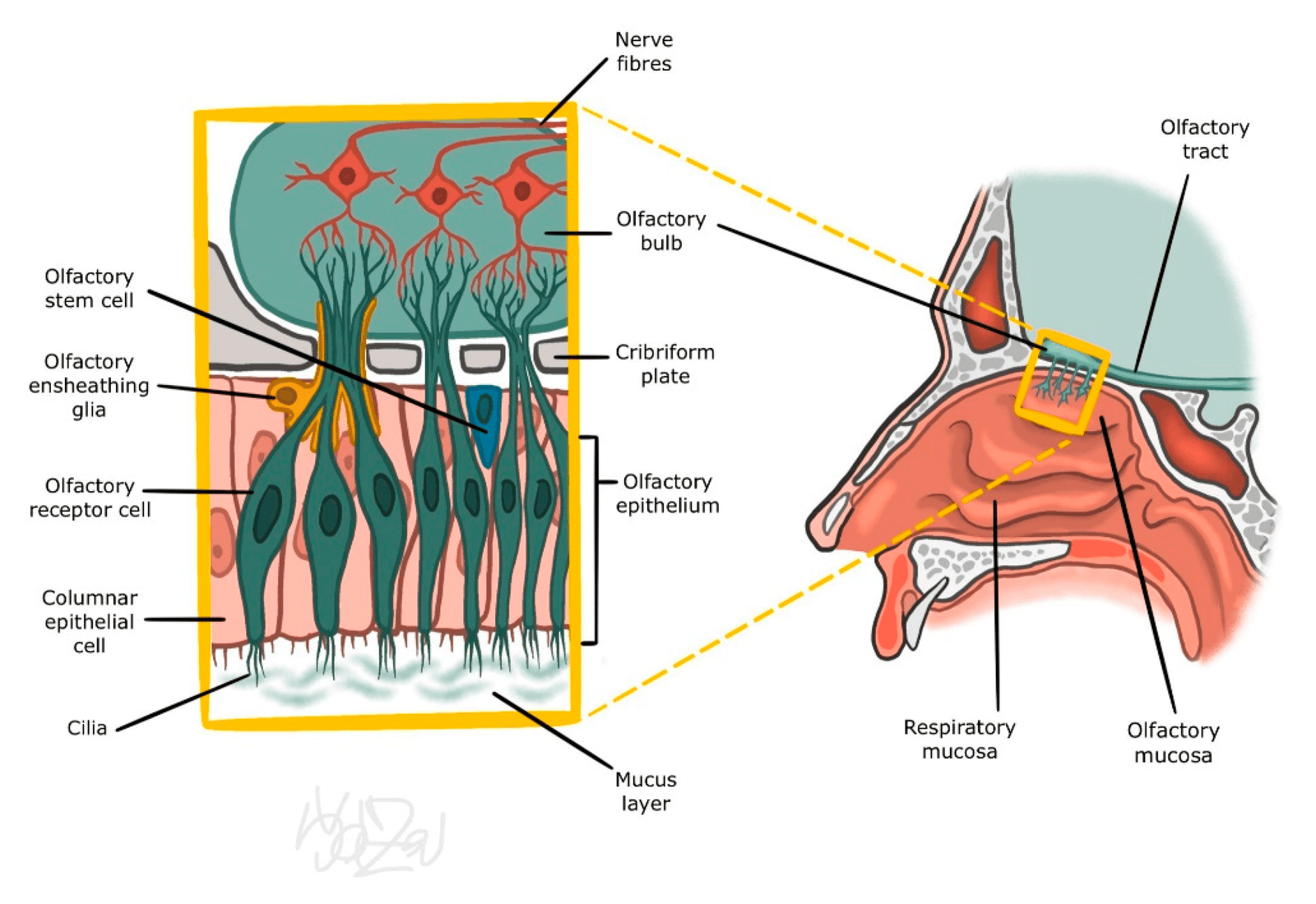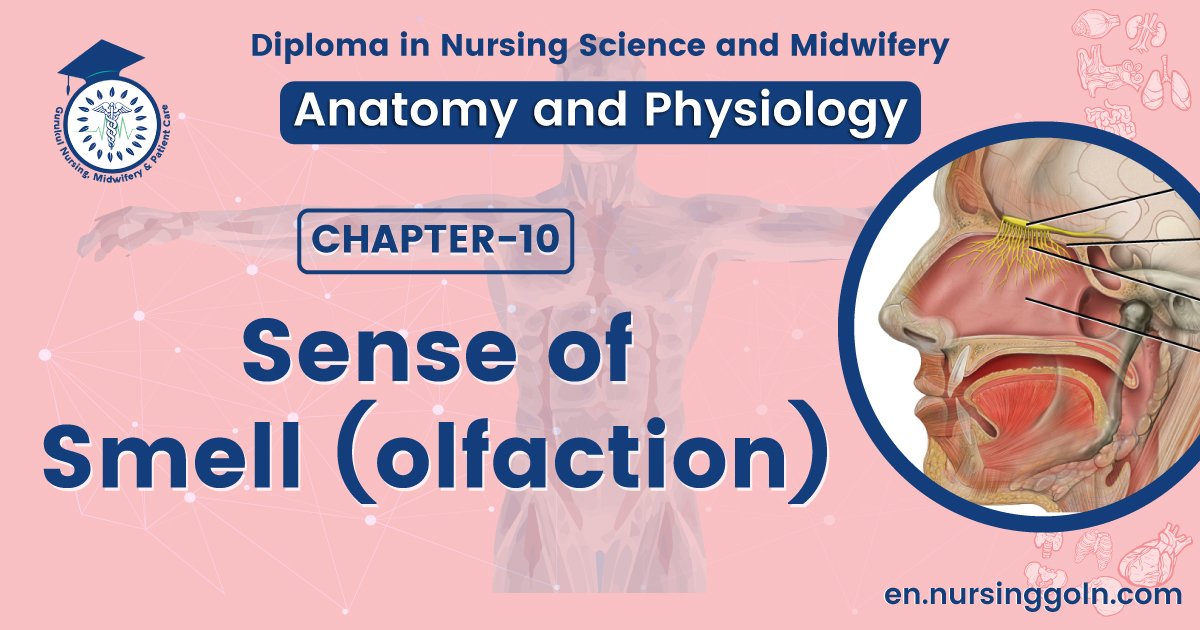Sense of smell (olfaction)-The course is designed for the basic understanding of anatomical structures and physiological functions of human body, musculoskeletal system, digestive system, respiratory system; cardiovascular system; urinary system, endocrine system, reproductive system, nervous system, hematologic system, sensory organs, integumentary system, and immune system.The aim of the course is to acquire knowledge and skills regarding anatomy and physiology.

Sense of smell (olfaction)
The nose contains 10-100 million receptors for the sense of smell, or olfaction (olfact = smell). Because some nerve impulses for smell and taste propagate to the limbic system, certain odors and tastes can evoke strong emotional responses or a flood of memories.
Structure of the Olfactory Epithelium
The olfactory epithelium occupies the upper portion of the nasal cavity and consists of three types of cells :-
- Olfactory receptors,
- Supporting cells, and
- Basal stem cells

1. Olfactory receptors are the first-order neurons of the olfactory pathway. Several cilia called olfactory hairs project from a knob-shaped tip on each olfactory receptor.
2. Supporting cells are columnar epithelial cells of the mucous membrane lining the nose. They provide physical support, nourishment, and electrical insulation for the olfactory-receptors, and they help detoxify chemicals that come in contact with the olfactory epithelium.
3. Basal cells are stem cells located between the bases of the supporting cells and continually undergo cell division to produce new olfactory-receptors, which live for only a month or so before being replaced.
Stimulation of Olfactory Receptors
Many attempts have been made to distinguish among and classify “primary” sensations of smell, Genetic evidence now suggests the existence of hundreds of primary odors. Our ability to recognize about 10,000 different odors probably depends on patterns of activity in the brain that arise from activation of many different combinations of olfactory-receptors.

Olfactory-receptors react to odorant molecules by producing an electrical signal that triggers one or more nerve impulses. Adaptation (decreasing sensitivity) to odors occurs rapidly. Olfactory- receptors adapt by about 50% in the first second or so after stimulation and very slowly thereafter.
Read more:
